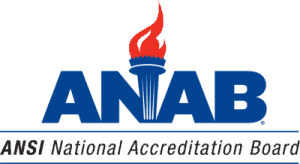Cause Analysis and Corrective Action

Accredited and certified organizations are required to identify and evaluate nonconformities to eliminate the nonconformity and ensure it does not recur or occur elsewhere in the organization. While it is a requirement for accredited and certified organizations, all organizations can benefit from cause analysis and corrective action when nonconformities occur.
The corrective action process involves many different steps, including correction, cause analysis, corrective action, and effectiveness review of actions taken. Each step is equally important to the corrective action process and should be considered when addressing nonconformities. See the process flow below for a pictorial explanation of a generic corrective action process.

What is Nonconformity?
ISO/IEC 17021-1:2015 defines nonconformity as the non-fulfilment of a requirement. Basically, the term nonconformity is used when anything goes wrong during processes related to business operations. Nonconformities can occur in any area of an organization but are more often identified when there is an impact to the product, process, people, or customers. This impact is a risk to the organization, so it is important to address the impact through the cause analysis and corrective action process. Eliminating causes of nonconformities ensures that they do not recur. Recurrence of nonconformities costs organizations time and money, so it is beneficial to address nonconformities effectively once rather than on multiple occurrences.
What Is Cause Analysis?
Cause analysis is defined as the process of identifying all causes that have or may have resulted in a nonconformity or failure. It is the determination of the underlying cause or causes of a nonconformity. Note that nonconformities often have more than one cause. All causes should be identified and addressed through correction and corrective action to eliminate the cause so that the nonconformity does to recur.
Cause Analysis Techniques
There are many different techniques to determine the causes of nonconformities. Often, organizations will benefit from using a combination of techniques during the cause analysis process. The most common techniques for cause analysis are Ishikawa diagrams and five whys. These two approaches work well together to determine all potential and realized causes of nonconformities. The format of these two techniques also facilitates ease of determination of corrections and corrective actions that can eliminate the causes of the nonconformity.
Ishikawa Diagram
Also called Fishbone Diagram, the Ishikawa diagram is a pictorial description of the nonconformity and causes related to specified categories. The name “Fishbone Diagram” comes from the way the diagram looks when compiled, as depicted below. The nonconformity is entered at the “head of the fish” with categories added as bones. Causes are added to each bone to fill in the diagram.

Categories can include:
- 6Ms: man, machine, method, material, measurement, and mother nature
- 4Ss: systems, skills, surroundings, and suppliers
- 8Ps: price, promotion, people, processes, place, plant, policies, and product
Categories should be selected based on the nature of the nonconformity, the context of the organization and the results expected from the cause analysis process.
Five Whys
The name of this technique indicates the mechanism for cause analysis. An organization asks why a nonconformity occurred, then continues to ask why until causes are identified that can be addressed through corrective action. Five whys can branch out into sub-whys, which is where multiple causes are identified. The technique is called five whys because, in general, it takes asking why five times to get to a cause or causes, but organizations can ask why as many times as is needed to determine the cause or causes of a nonconformity.
What Is Corrective Action?
Corrective action is defined as action to eliminate the cause of a nonconformity and to prevent recurrence. Corrective actions should be focused on the identified causes and proportional to the impact of the nonconformity on the organization. Corrective actions may include changes to management system documentation, additional training for personnel, procurement of additional equipment or instruments, adding resources, or creation of new processes, for example. Consider the cause of the nonconformity and what actions should be taken to eliminate the cause.
Correction vs. Corrective Action
The cause analysis and corrective action process includes correction in addition to corrective action. Both correction and corrective action are important to the process and are used in conjunction with one another to address nonconformities.
ISO 9000:2015 defines correction as an action to eliminate a detected nonconformity. In Note 1 to entry in Section 3.12.3, it provides that a correction can be made in advance of, in conjunction with, or after a corrective action. Correction is an immediate action taken, often with no consideration of the cause of the nonconformity. It can be used to stop the nonconformity from continuing or providing results to a customer while cause analysis is occurring. Examples include rework of a product, retest of a control, or interim reporting of results.
On the other hand, corrective action is used to eliminate the causes of nonconformities. There is more planning when determining corrective actions focused on eliminating the nonconformity. Correction focuses on correcting the instance of the problem while corrective action is used to correct the cause of the problem to prevent it from recurring.
Additional Resources
ANAB offers a Corrective Action Process and Cause Analysis course that presents the four most common cause analysis techniques: Ishikawa diagrams, five whys, FMEA, and pareto charting. The concepts are reinforced by walking through examples and reviewing standard requirements related to corrective actions.
A webinar on Cause Analysis and Corrective Action Revisited talks about the importance of corrective actions to prevent recurrence of nonconformities and how cause analysis and corrective action fits into risk-based thinking.
Additional blog posts on root cause analysis can be found on the ANAB Blog. Root Cause Analysis and ISO/IEC 17011:2017 discusses cause analysis and corrective action from the accreditation body perspective. What is Root Cause Analysis? Dives into the need for cause analysis as an ISO/IEC 17025:2017 requirement.






